A few weeks ago, I saw an image just like the one above. The photo up there is one of a couple I’ve taken of a paper wasp carrying off a tiny monarch caterpillar. On that day in 2019, my kids were watching and were not happy that I didn’t stop it. They didn’t buy that I couldn’t pluck the wasp out of the air and take the caterpillar from its mandibles without harming it. To this day, I’m not happy seeing monarchs taken, but I’ve come to see it as a thing that happens in a healthy backyard ecosystem. Those same wasps patrol my pepper and tomato plants, picking off the caterpillars that eat them. They’re a help to me.
And anyway, within a couple of weeks of witnessing that most recent caterpillar death, this is was our milkweed:
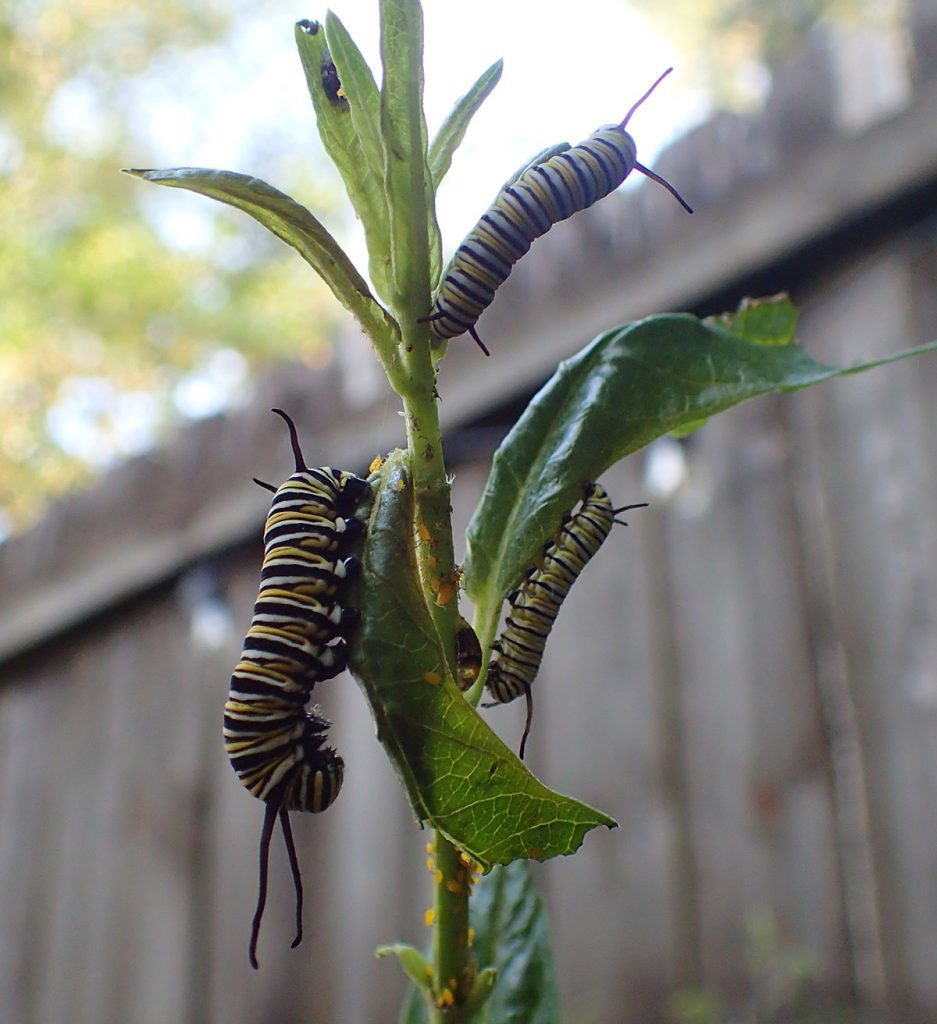
Soon, only one leaf remained between all of our milkweed plants.
After a slow start, it has been a busy year on our milkweed. Every year is different, but we always lose a few. There’ve been times it seemed like we couldn’t keep caterpillars alive. It can make you feel like a bad parent to your little monarch babies.
One particularly bad month led me to write a post about monarch predators. It’s been one of the most popular posts I’ve ever written. People keep searching for this information because we feel like we need to protect these little guys. No one likes the idea that cute little caterpillars, a species in peril no less, are getting eaten in their yards. People want to know what is eating them, and how to stop it (for the record, I have never recommended killing their predators).
I’m writing this today because my perspective has changed.
The Yard is More than a Monarch Habitat
Now don’t get me wrong, I still hate seeing little caterpillars get eaten. What has changed is my thinking about the garden, and what it should be to all of the insects in it.
Part of this is because of new research published over the last year or so. I’ll talk about those studies soon. I’ve also been documenting insect life in my yard since 2018, which has broadened my view of insect life. I’m amazed at the diversity of life that can exist in such a small space, and the different niches filled by the many insects in it. There are so many different plant eaters, and so many critters to eat them. Some are predatory insects, others are spiders, lizards, and birds.
I no longer think of the yard as a mere pollinator garden. Instead, I see it as a wildlife habitat. One that still accommodates plenty of pollinators, and with plenty of larval host plants for butterflies. But most of all, I want to support a food web.
In 2018, a study looked at declining songbird populations in North America. The researchers determined that we’ve lost 30% of our songbird population since 1970 because people aren’t planting enough native plants in their yards. These natives evolved on this landscape, along with a host of insects that feed on specific plants. Birds, in turn, eat those insects.
Without native plants- at least 70% of the plant biomass in your yard, according to the study- we can’t sustain birds. Declining bird populations indicate declining insect populations, and insects feed much more than birds.
How do monarchs fit into this bug (and bird and lizard) eat bug world?
My priorities have shifted, seemingly putting monarchs at a disadvantage. Plant eaters like monarch caterpillars are at the bottom of the food web. When it comes to a lot of our other plants, we think of plant eaters as pests. A tobacco hornworm eats tomato plants, and cutworms and loopers eat a variety of the fruit and veggie plants we grow. Long-tailed skippers are butterflies with pretty blue backs, but their bean roller caterpillars eat the leaves of our peas and green beans.
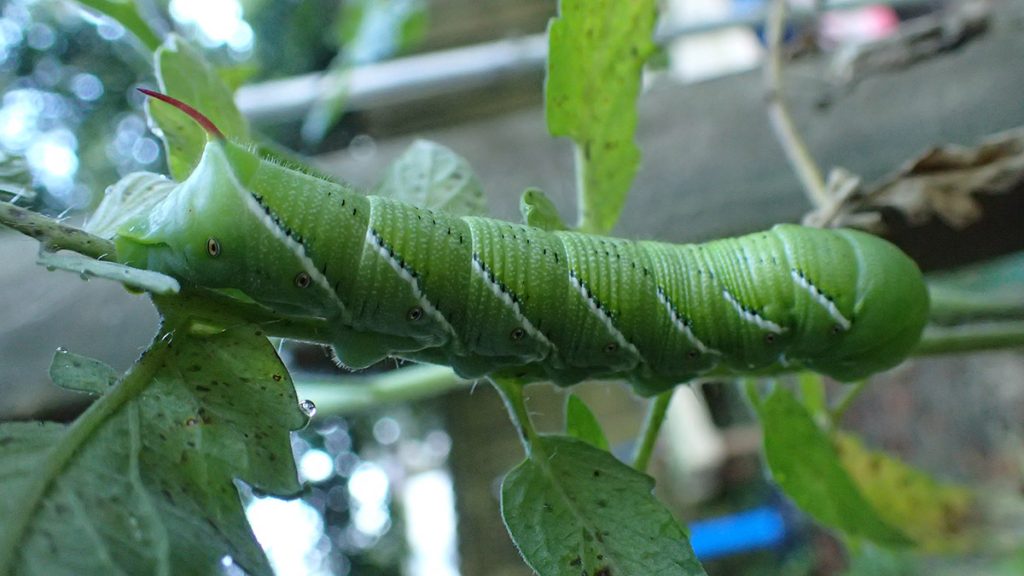
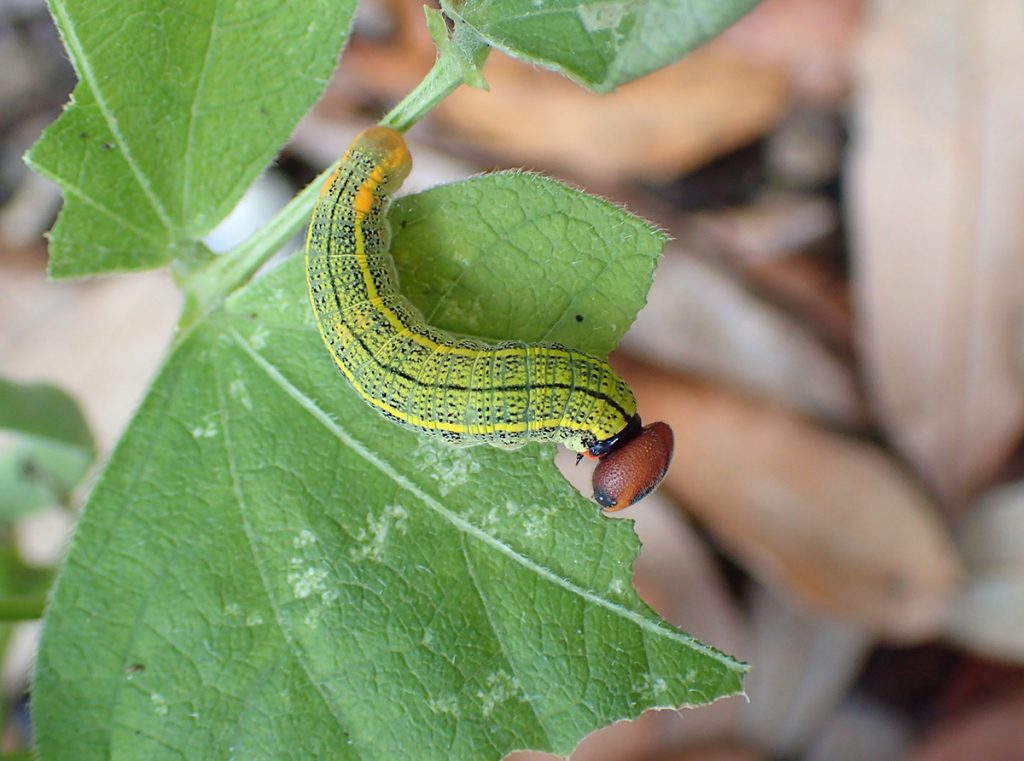
What’s the difference between monarchs and these other caterpillars we label as pests? The plants they eat. If humans ate milkweed seed pods instead of tomatoes, we might appreciate the striking hornworm caterpillars and the impressive sphinx moths they become.
Caterpillars are plant consumers, like aphids and stinkbugs. And a big thing keeping plant consumers from destroying all plant life on earth is predators. For this reason, predatory insects are considered beneficial insects. Ladybugs eat aphids, but, yes, also monarch caterpillars. I see wasps taking nondescript green caterpillars off of my food plants, same as they do with monarchs.
Predators limit plant consumption, and help provide balance in a yard full of diverse plants and plant eaters.
The question is, how do we protect our monarchs in this violent landscape? The answer: we don’t.
This is where we look at recent research.
In my 2017 post on monarch predators, I wrote that the only way to truly protect monarch caterpillars is to bring them into an enclosure. This is true for those individual monarchs, but it might be bad for them as a species. A 2020 study found that captive raised monarchs were more likely to be weaker, smaller, and have less elongated wings than their wild counterparts. Traits less likely to help a butterfly survive.
The researchers who conducted the study didn’t pinpoint exactly why captive breeding resulted in these traits. One likely reason is that natural selection isn’t removing the least suitable caterpillars.
What traits make a caterpillar more likely to survive than another?
Over the years I’ve noticed slight differences in monarch behavior. Some mothers lay eggs under leaves, and spread over several plants. But there have been times when one dropped multiple eggs clustered on a plant, or conspicuously atop the leaves.
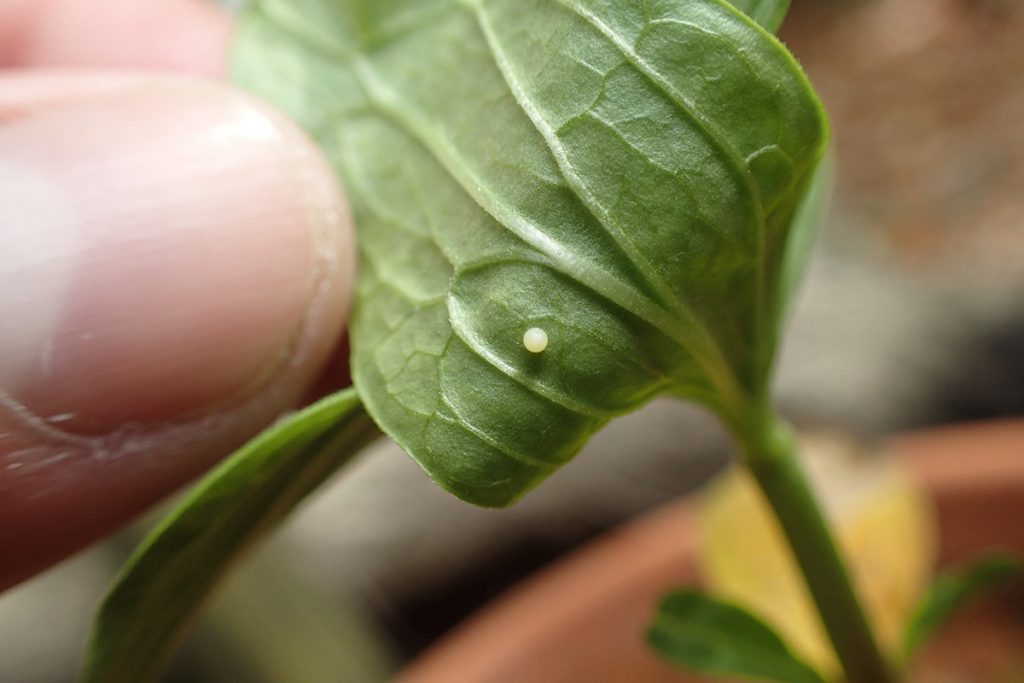
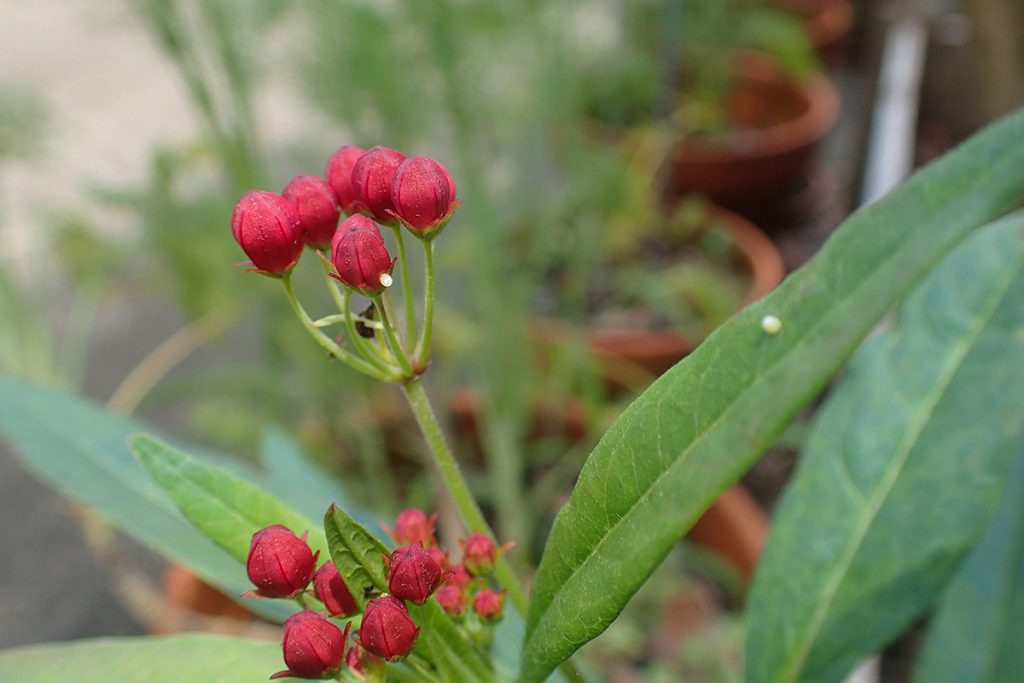
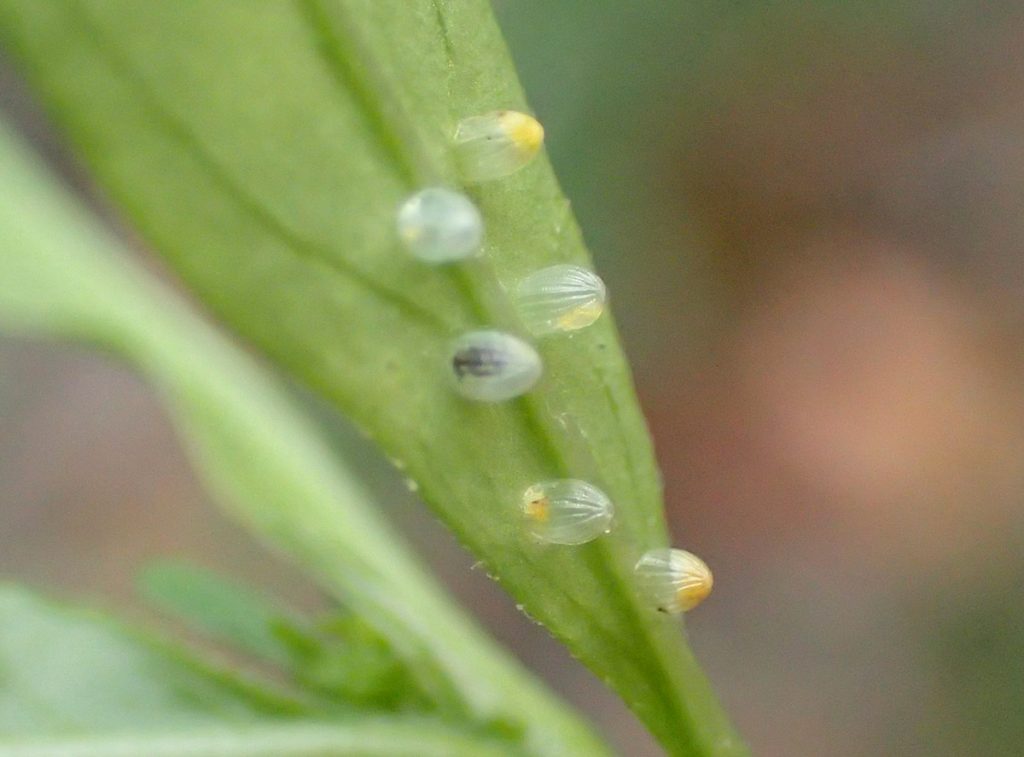
Sometimes I don’t notice we have caterpillars until they’re large fourth or fifth instars. Did they feed at night, when wasps are asleep? Other monarchs seem to grow quickly, and that could be an advantage. The next study I’ll mention looks at monarchs’ ability to survive to the third instar phase. Once past this threshold, a monarch is large and has consumed a good amount of toxic milkweed, which makes it toxic to predators. Reaching that stage quickly might be positive survival trait. Knowing how to hide from predators is a definite advantage. Many monarchs hide their chrysalides as well, where others leave them in plain sight.
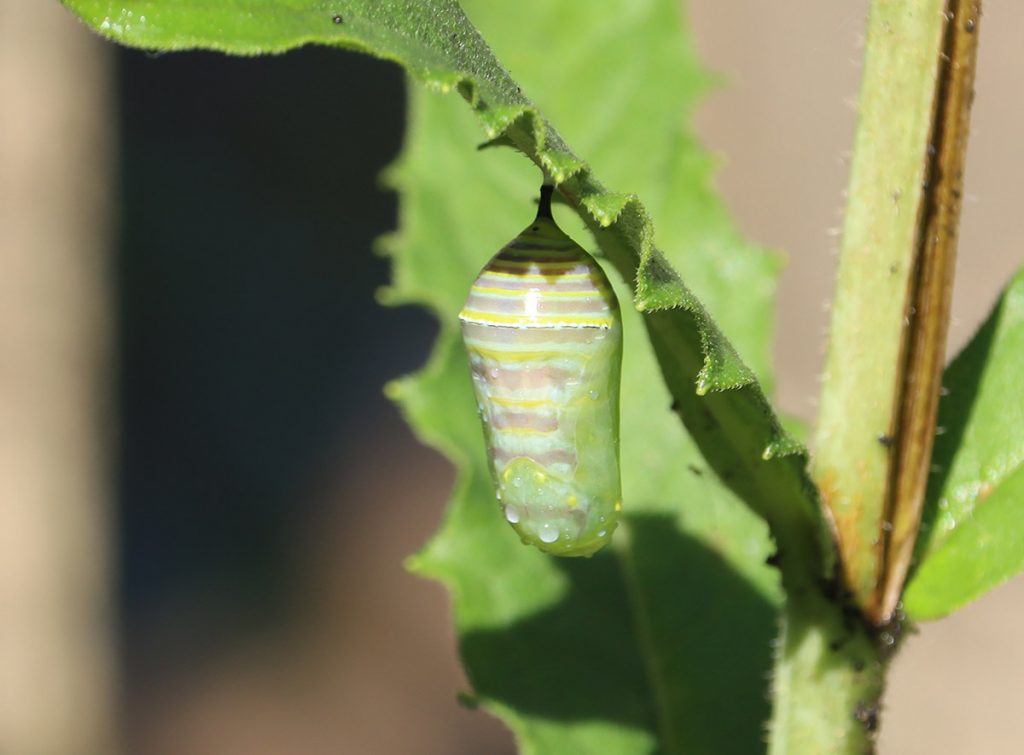
The next study cites previous research that found that, on average, about 13% of monarchs make it past their third instar phase. The odds are that most of your caterpillars won’t make it.
Read More: Feeding caterpillars in your north Florida Garden
- Raising monarch, black swallowtail, giant swallowtail, and longtailed skipper butterflies, with photos of every life stage.
- Raising gulf fritillary caterpillars (passion flower caterpillars), with photos of every life stage.
- Caterpillar supermarkets: a list of the wildflowers and trees/ shrubs that host the most moth and butterfly caterpillar species.
- A lot of insects are out to kill your monarch caterpillars. It’s a sign that your garden is healthy.
Help Monarchs- By Leaving Milkweed Aphids Alone
Letting natural selection pick winners and losers seems like a harsh way to raise little caterpillars. But a hands-off approach has other benefits for monarchs. A recently released study suggests that monarchs are more likely to survive on milkweed shared with non-predatory insects than on a “clean” plant. They believe this is because the plant has more food options for a predator, which lessens the chance that they go after the monarch.
In other words, leave those little orange milkweed aphids alone. Same with the milkweed bugs that like to eat seed pods.
I think there is a similar dynamic at work when you have a diversity of native plants in your yard. I’m not citing research here; this is what I’ve gathered from my own observations. But a variety of native plants do attract a variety of native plant eaters. This also means more food choices for predators, and on more plants spread over your space. I mentioned earlier that paper wasps hunted on our food plants, which aren’t native, but I’ve also seen them looking over cherry laurel tree leaves, fanpetals, and others.
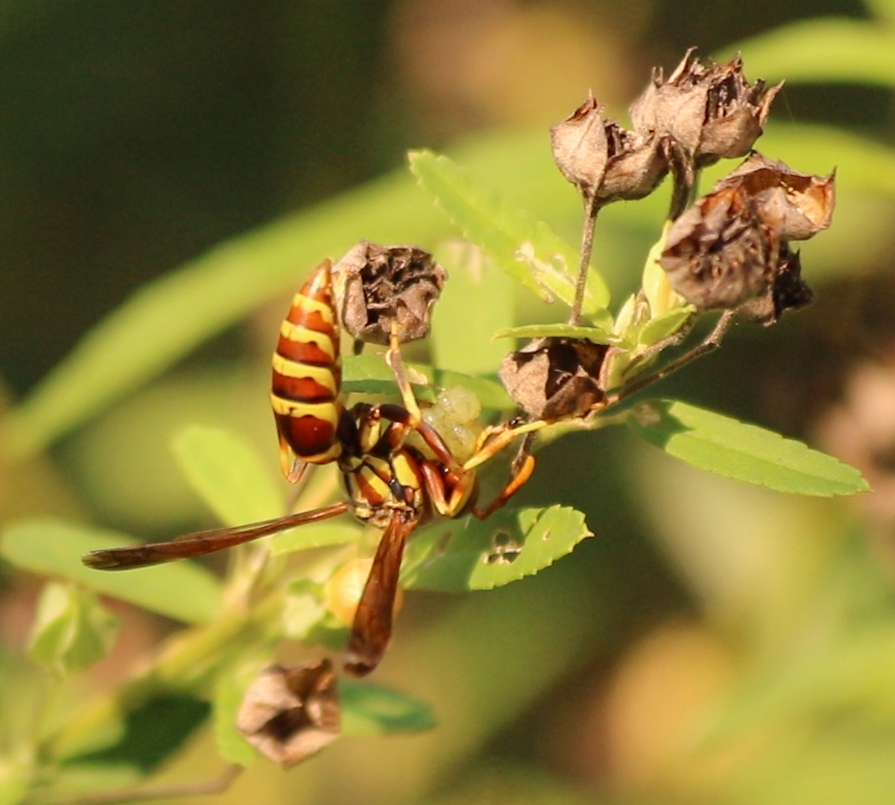
By this thinking, a monarch friendly garden is more than milkweed for caterpillars and other nectar plants for adults. It’s a garden full of every kind of caterpillar, and a lot of other little nondescript plant eaters.
Earlier this year, I wrote a post about letting native weeds grow in your yard. I list resources for finding out what you have, and whether or not it’s native. Patches I let get weedy are full of plant eating insects. I also have beds where I’ve planted wildflowers, and also plenty of flowers in pots and in raised beds alongside food plants. But that’s how I do it. Every space is different, and every gardener has their preferences. Experimenting with different plants and layouts is part of the fun, but I do think that diversity is key.
Meet the Predators!
Even people who don’t geek out on plants and insects the way I do appreciate seeing monarchs complete their life cycles. We buy the right plants, and an ornate butterfly lays eggs on it. We spend weeks watching little caterpillars eat and grow, and then we see them transform. The visual of a caterpillar spinning that smooth green chrysalis, and then emerging as a butterfly, is enticing whether we’re hard core wildlife enthusiasts or not.
However, if you decide to diversify your garden, for the monarchs or the birds, you’ll be treated to other enticing visuals. Other pollinators, yes, and who doesn’t like seeing butterflies on flowers? In recent years, I’ve found that some of the coolest looking insects are those I want to keep away from my monarchs. Yes, the predators.
I’ll admit that I’m into weird looking critters. But I also like seeing nature in action. Pollination, metamorphosis, and life and death struggles. Insects offer all of that in your own yard.
Here are some of my favorite backyard predators:
Robber Flies
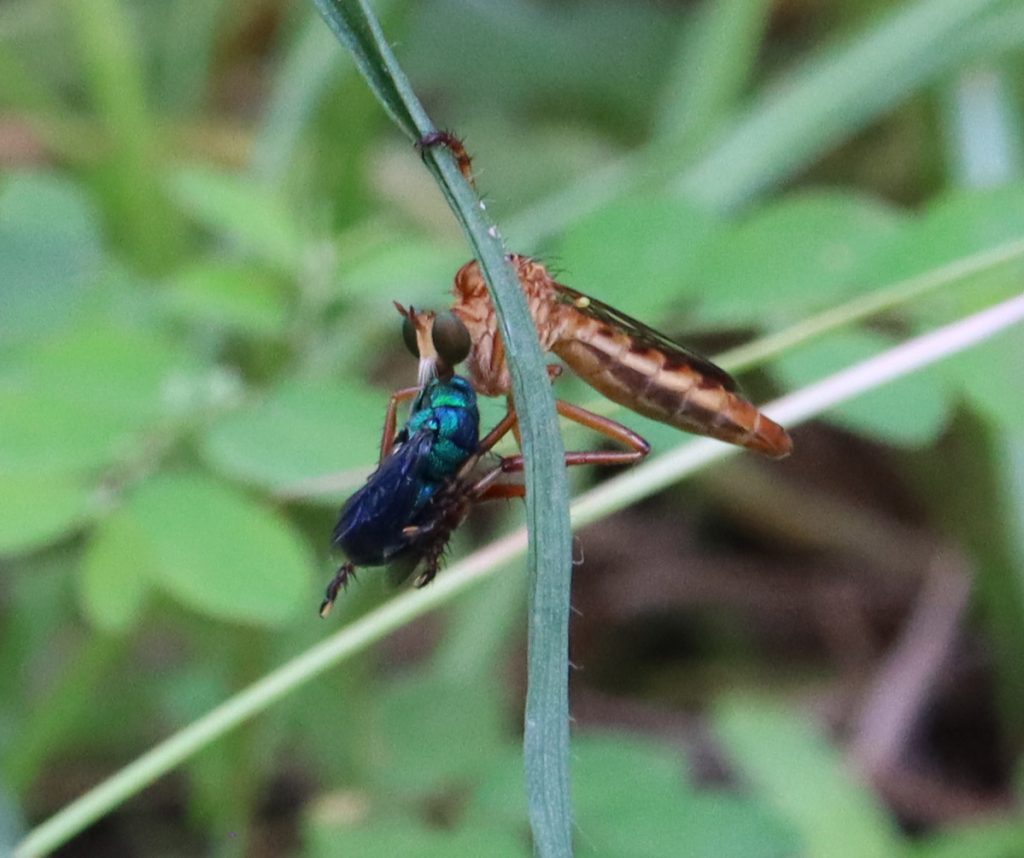
This one is not likely a threat to monarchs, but it is one I enjoy spotting in the yard. You can see how it’s using one of its legs to hang from the tomato cage. This is a hanging thief, a member of Asilidae, the robber fly family. Hanging thieves (genus Diogmites) often hang under leaves, waiting for flies, bees, or wasps to pass under.
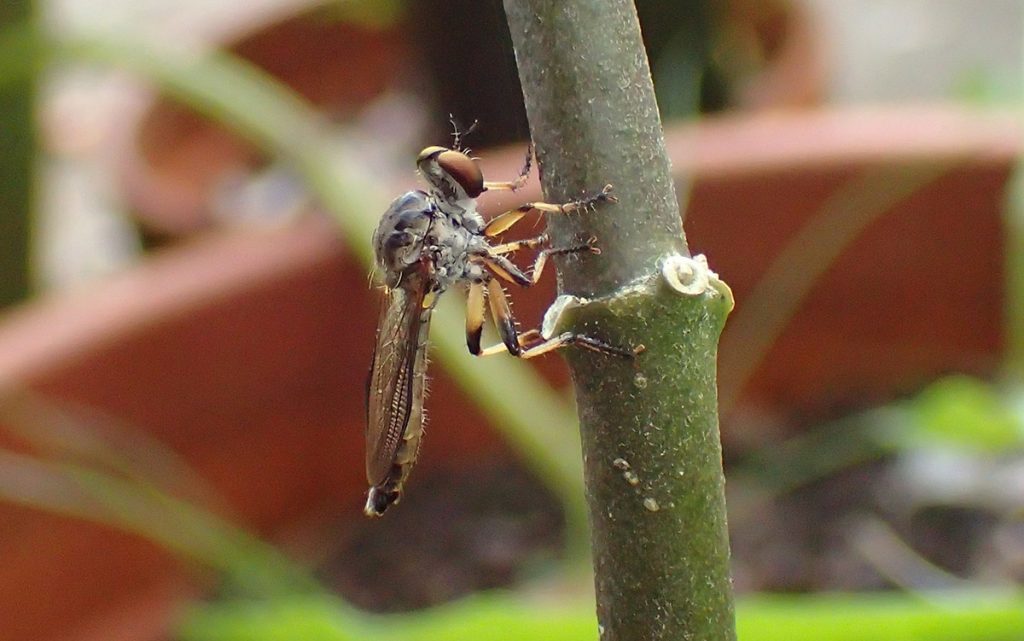
Hanging thieves are common in our yard, but a couple of months ago, I spotted a robber fly from another genus. You can see it doesn’t have the long legs from which to hang, like Diogmites. Still a mean looking critter, though.
Syrphid Larvae
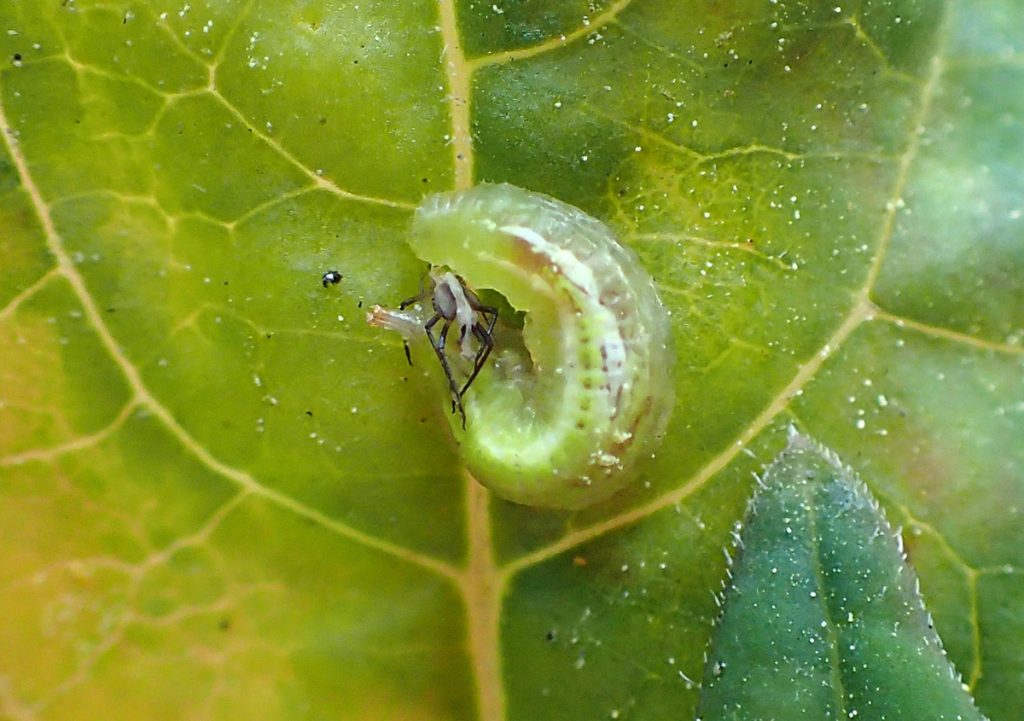
One reason I started investigating monarch predators was the appearance of these guys on our milkweed. One day I saw one eating milkweed aphids, and started trying to find out what it might be. This is a hoverfly, or syrphid fly, larva. The adults are bee mimic pollinators, and the larvae eat aphids.
I had once wondered whether these eat monarch caterpillars, but that’s never been observed. If they did, it would be the very smallest ones. But it’s not likely.
I’ve spotted a few different species of adult hoverfly in the yard, and a couple of different looking larvae.
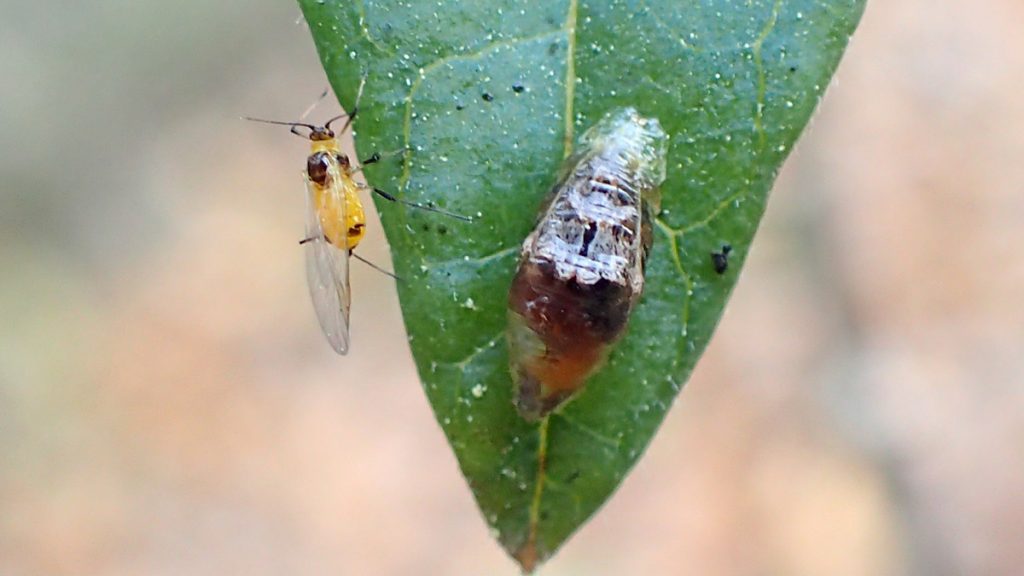
I mostly see these brown and white little killers, while others are green:
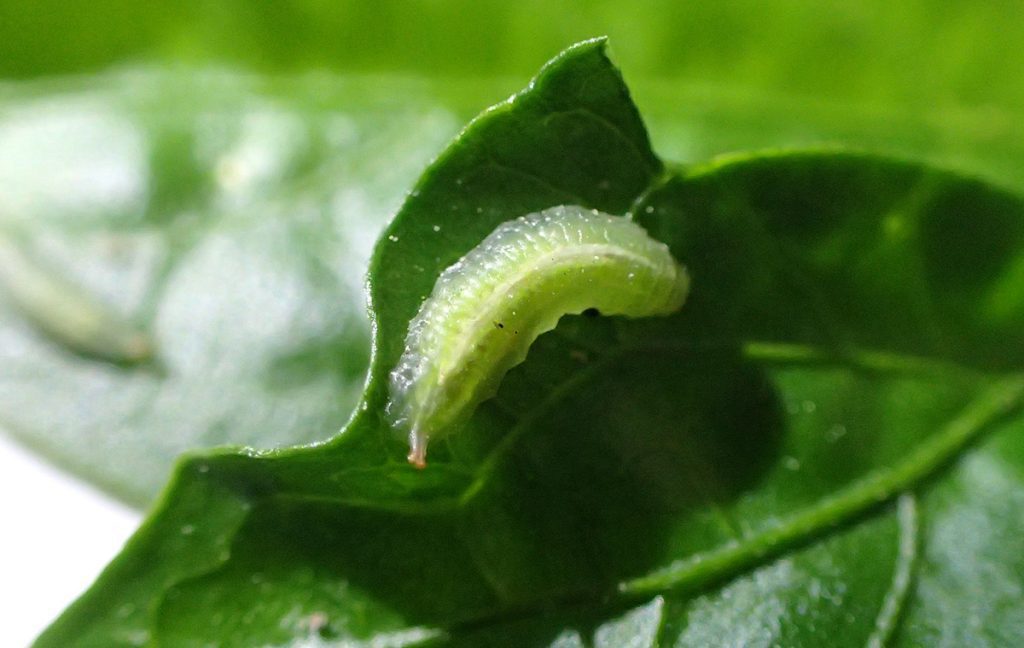
This one was hunting aphids on a pepper leaf. I had at first thought it was a caterpillar eating leaves near cluster of aphids, and used iNaturalist to identify it. Instead of two types of insects eating my pepper plants, I learned that I had one plant consumer and one predator to take care of it. The aphids were soon gone.
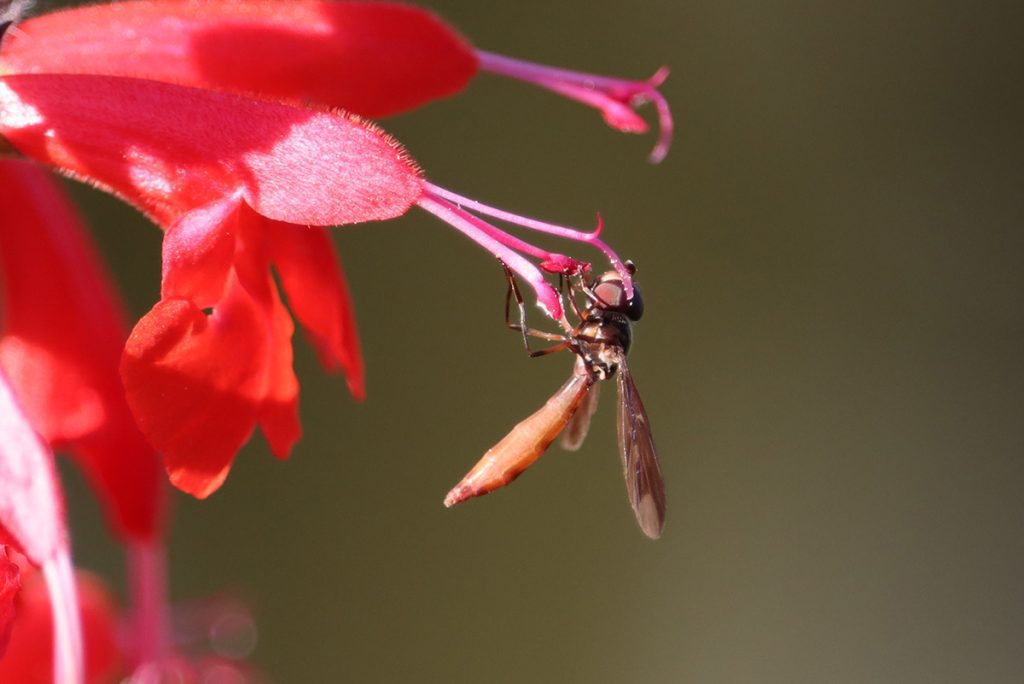
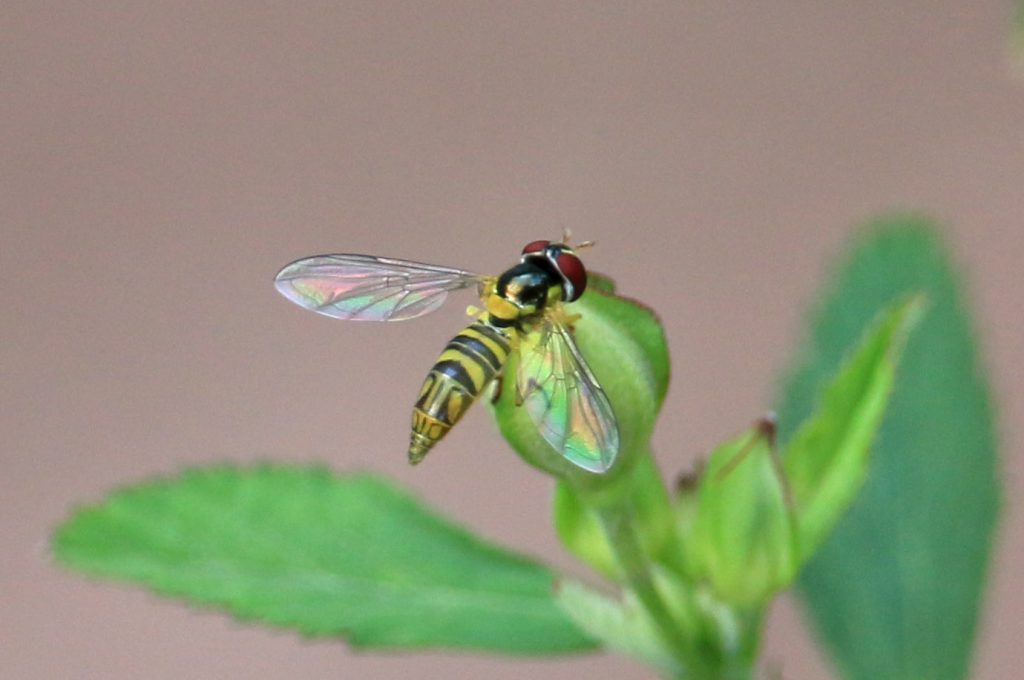
Above are a couple of adult syrphid species.
Assassin Bugs
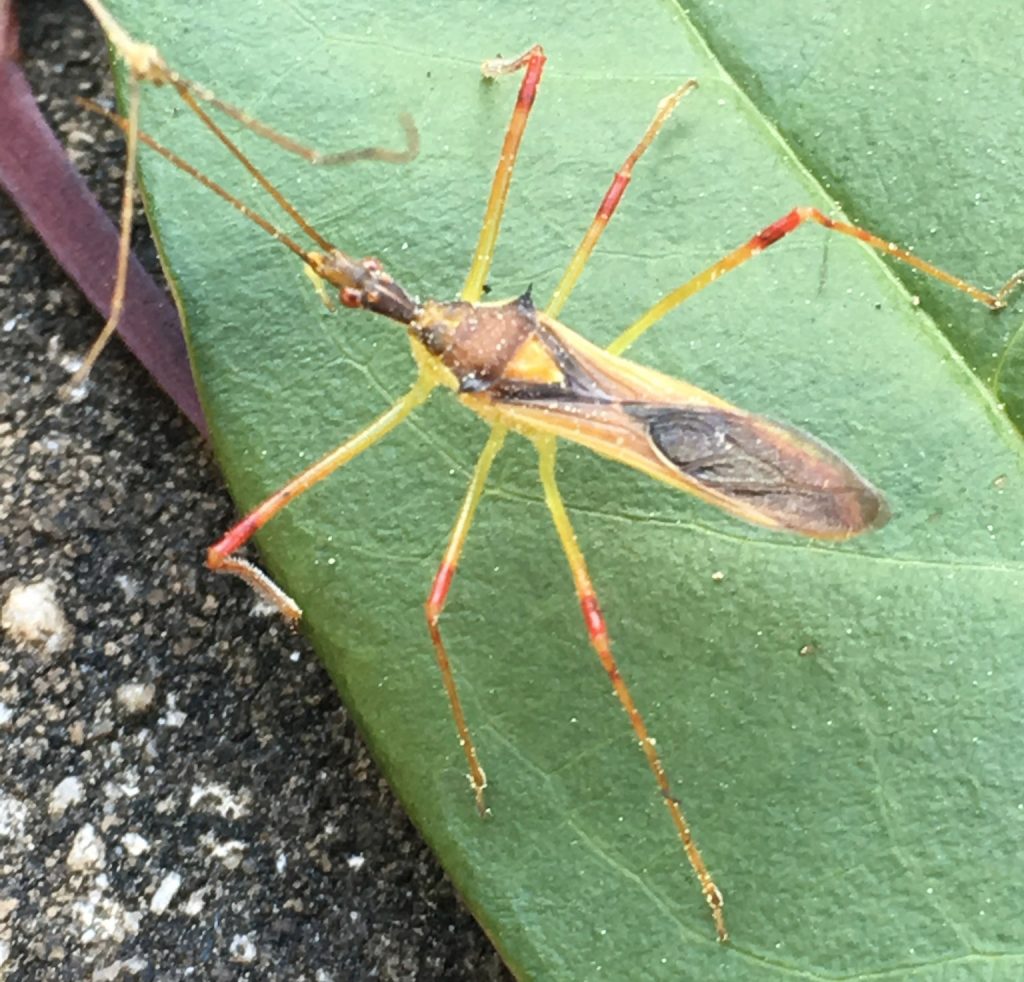
Assassin bugs are true bugs, and have a similar body shape to plant eating leaf footed bugs. The easiest way to tell them apart is to look at end of their legs. Notice the insect above does not have that leaf like protrusion at its “feet.”
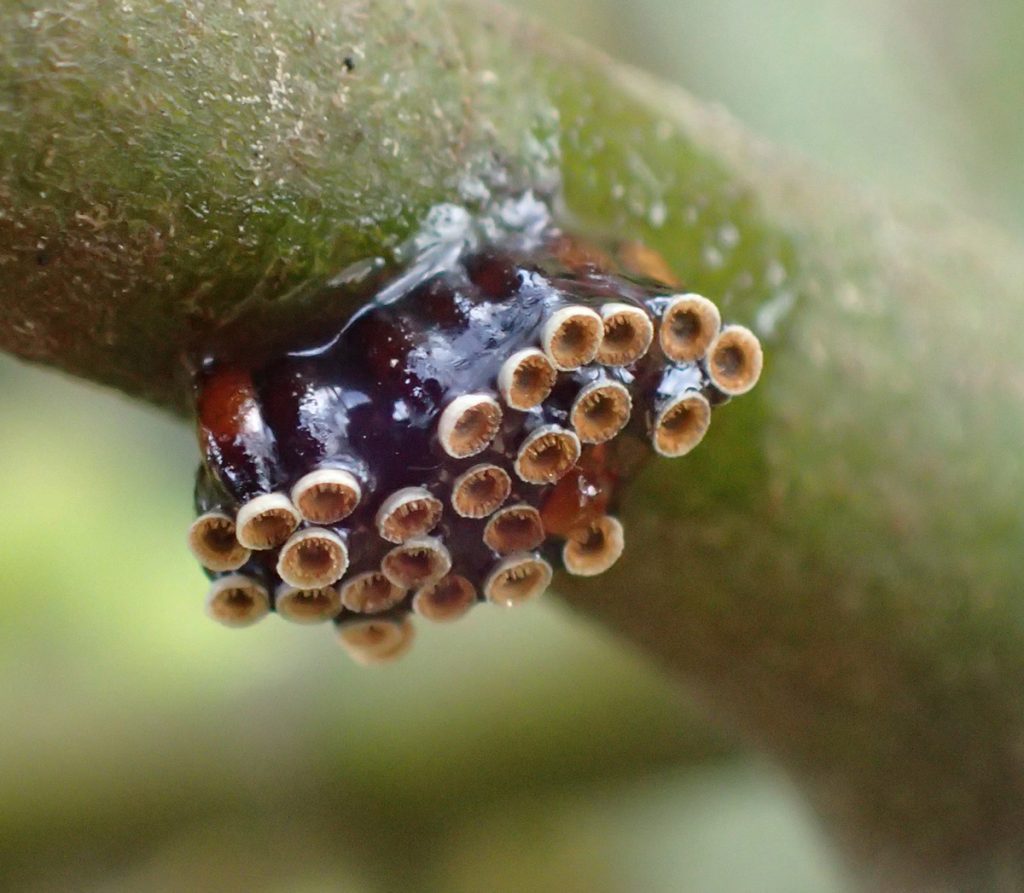
UF/ IFAS Extension Agent Mark Tancig and I found these while shooting a segment on mistletoe.
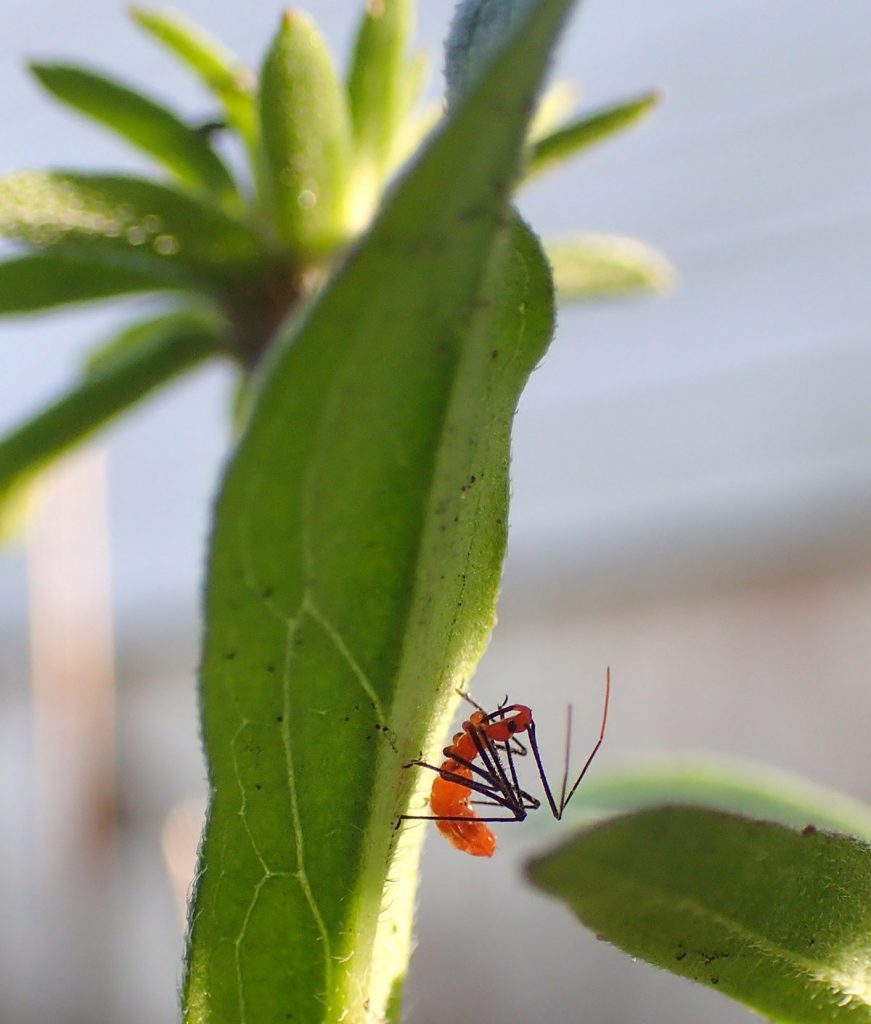
Here is a milkweed assassin nymph. Nymphs are sub-adult insects.
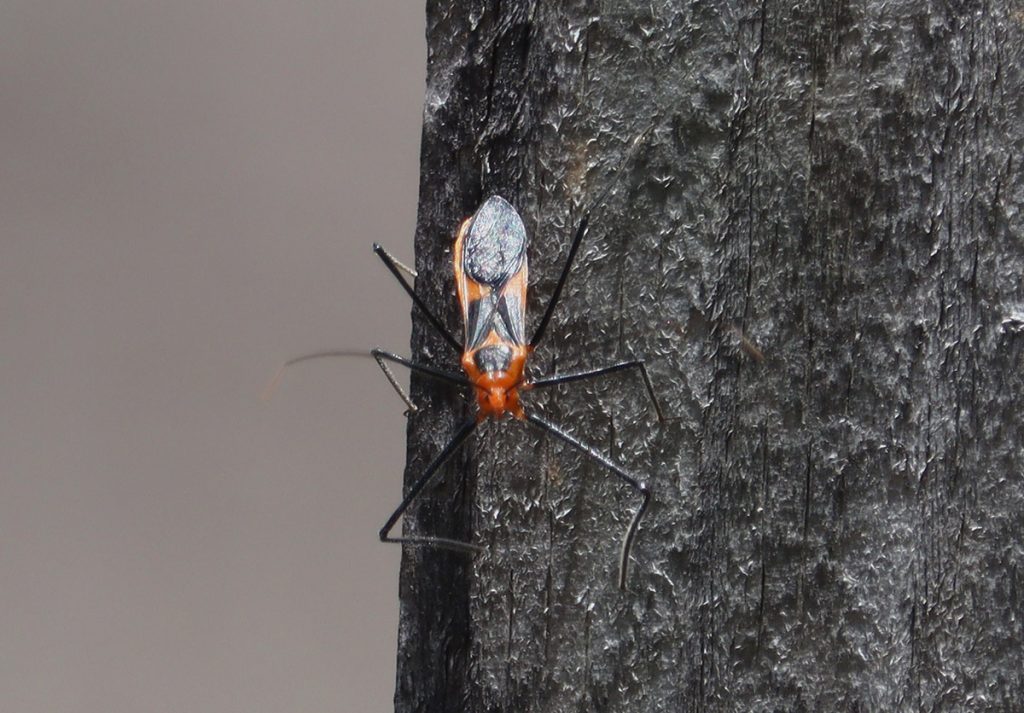
And here is an adult a few months later. I used to think this was a milkweed specialist, but it turns out it gets its name from the red and black pattern, which resembles a milkweed bug. It’s a generalist feeder and it does eat caterpillars, but it’s not specifically a threat to monarchs.
Solitary Wasps
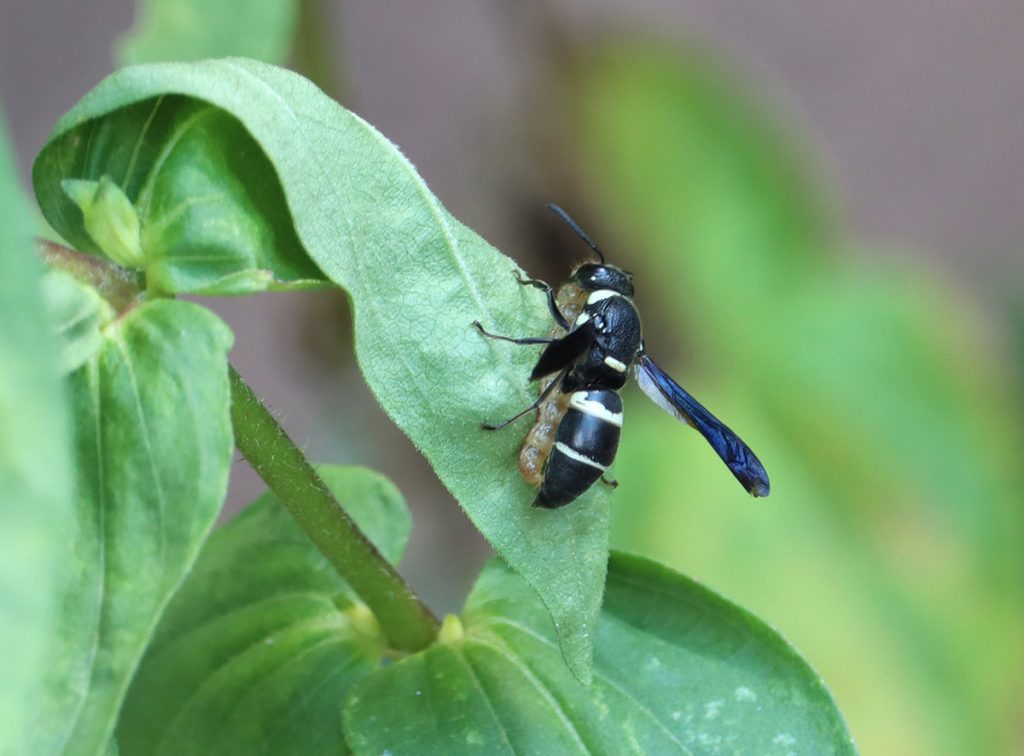
Earlier in the post, I mentioned paper wasps. These are social insects, making colonies of papery hexagons that hang from our homes. Interviewing University of Florida researcher Dr. Rachel Mallinger for an upcoming project on bees, I learned that the bees and wasps most likely to sting are the social species. They defend their colonies, and react more aggressively than solitary bees and wasps.
There are far too many solitary wasp species in our area to list here. At some point, I will put together a page featuring them.
Different wasp species eat different things. Some are predators, and others are pollinators. Others feed from flowers but drag caterpillars home for their larvae to eat.
I’ll share a couple solitary species here, as I do appreciate their many shapes and varied colors.
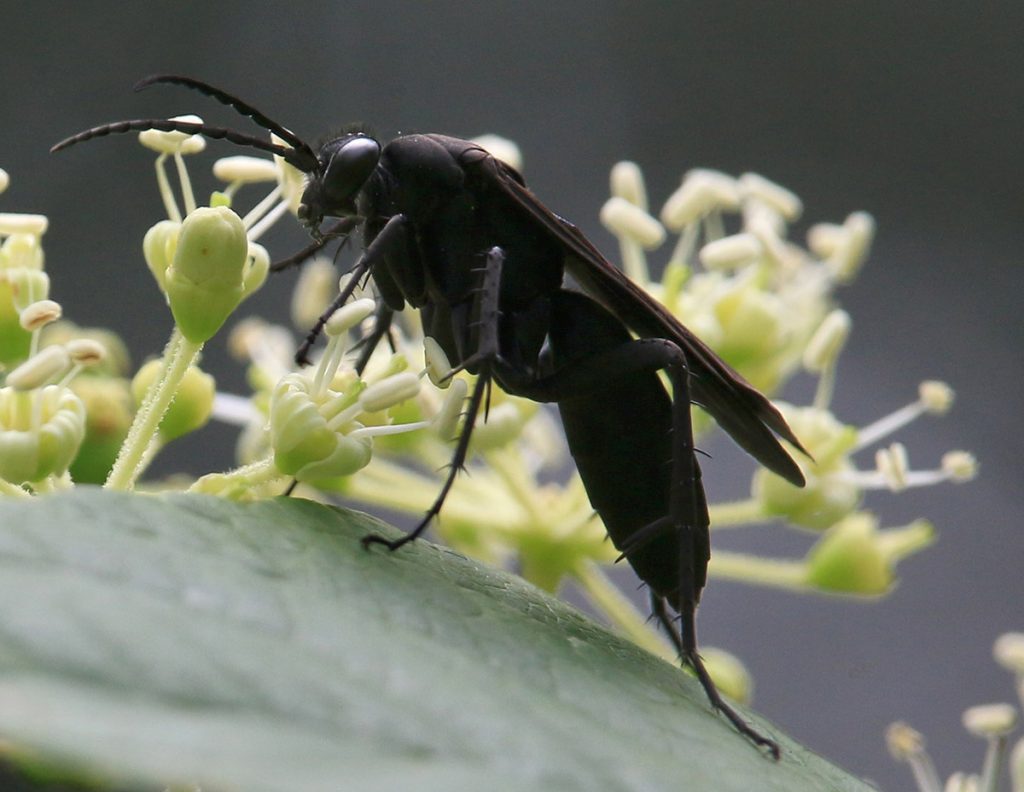
Over the summer, I produced a segment on devil’s walkingstick, a plant that for a few weeks over the summer is choked with dozens of pollinator species. I had never heard of spider wasps before then. But I identified three different species on this plant alone. As the name implies, they hunt spiders.
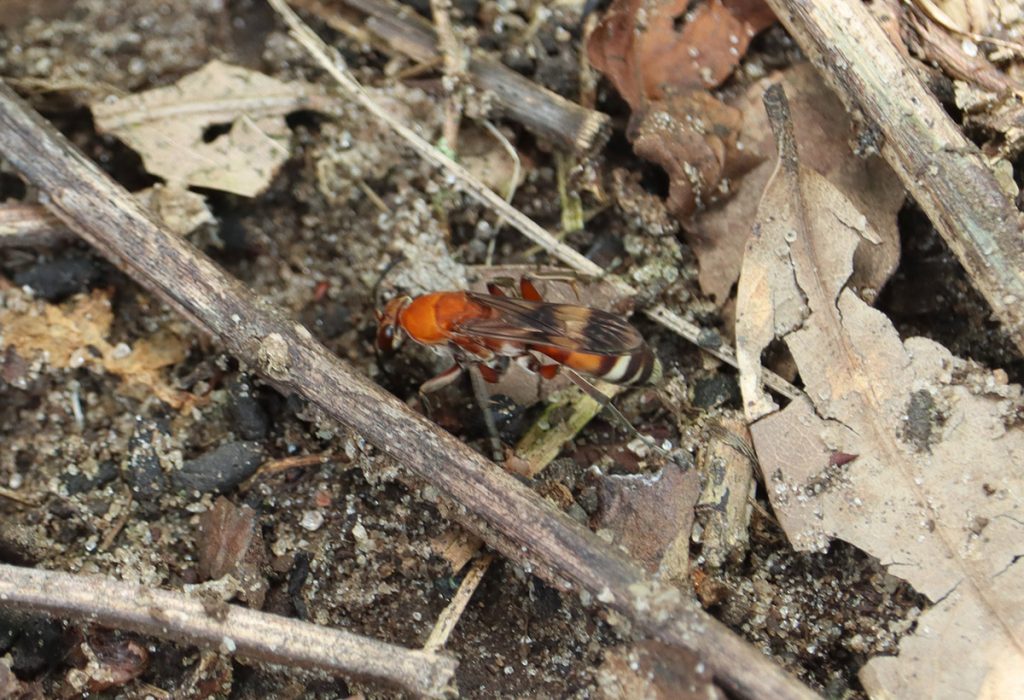
I photographed this fourth species of spider wasp in my yard. It’s not a great photo, as the wasp was running. But I include it because I had a nice message exchange on iNaturalist about it with a researcher. I learned that this species specializes in trapdoor spiders, which live entirely underground and ambush beetles that crawl over their lairs. This wasp is a predator of a very specific predator.
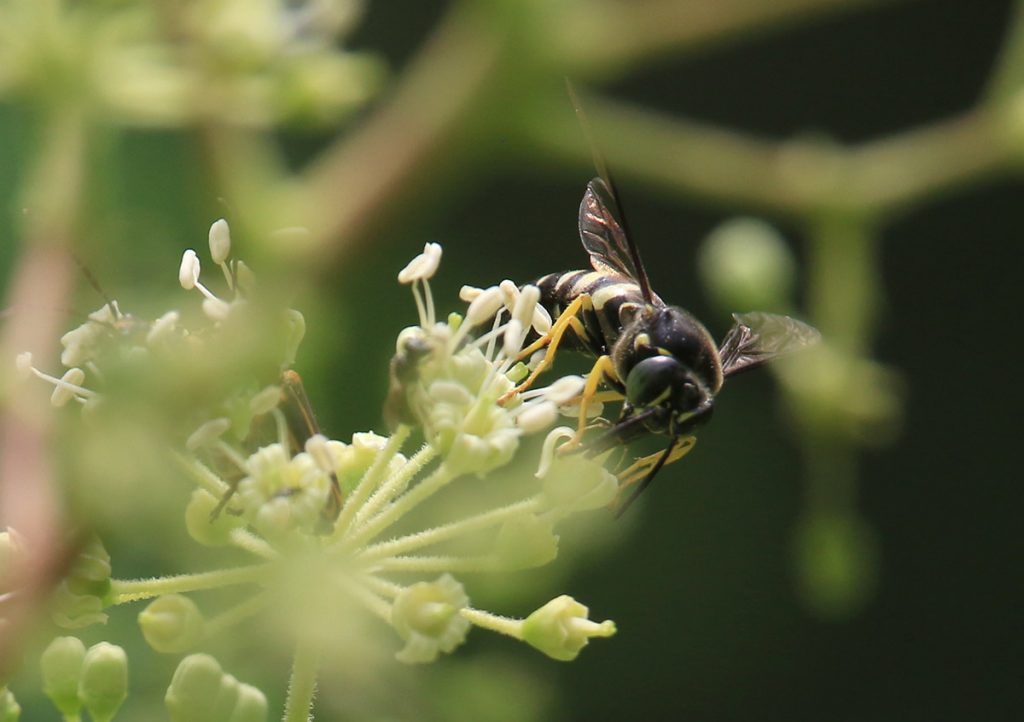
This wasp specializes in stink bugs, which can become a garden pest.
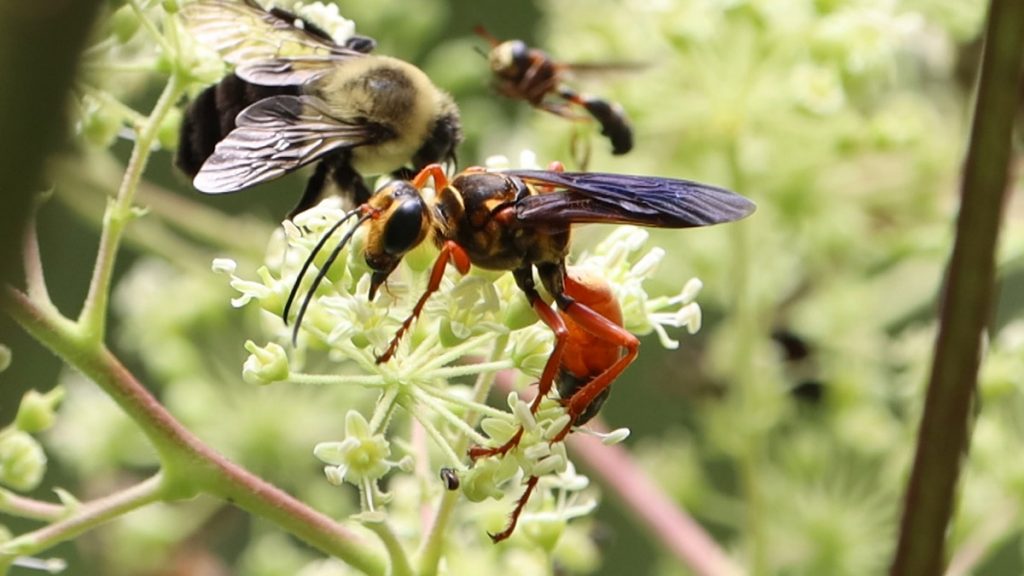
I could share many more, but that can wait for a full-on wasp page. So, lastly, here’s a pollinator that paralyzes prey to bring back to its subterranean nest. It then lays eggs on the prey, its larvae hatching to consume it.
Mantises
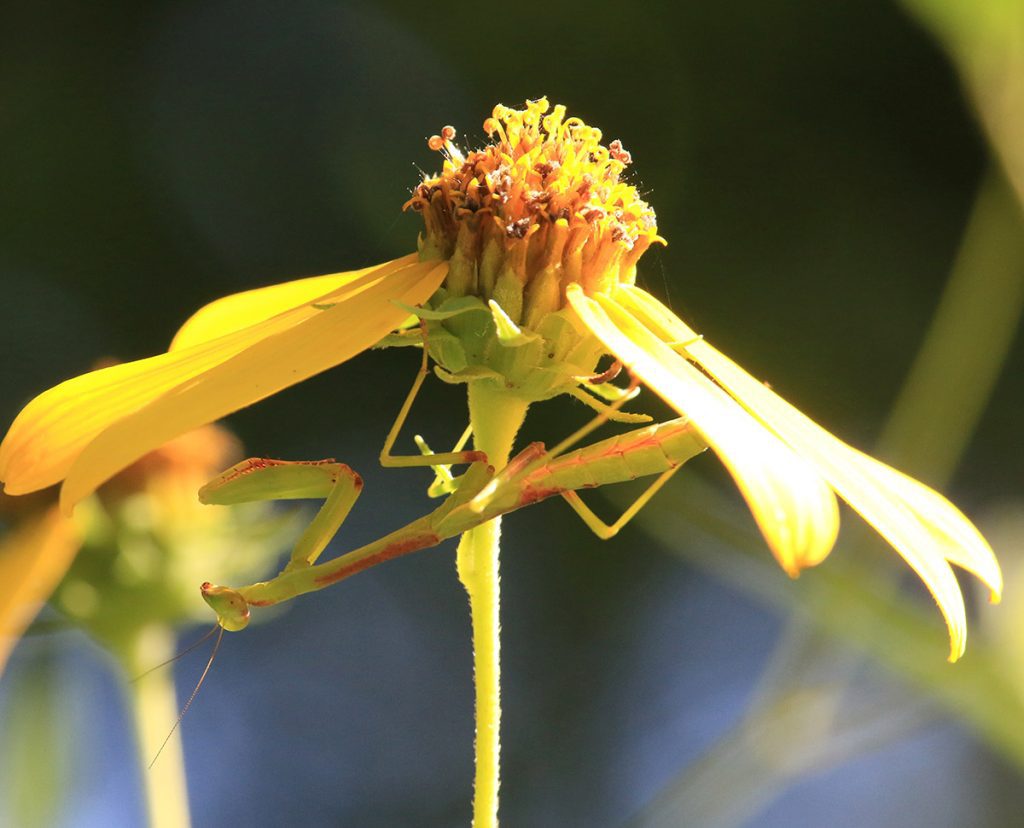
We have a few species of mantis in Florida. Scanning iNaturalist observations, Carolina mantises look to be the most common in the panhandle. Judging by where I’ve most often seen them, they do go after pollinators.
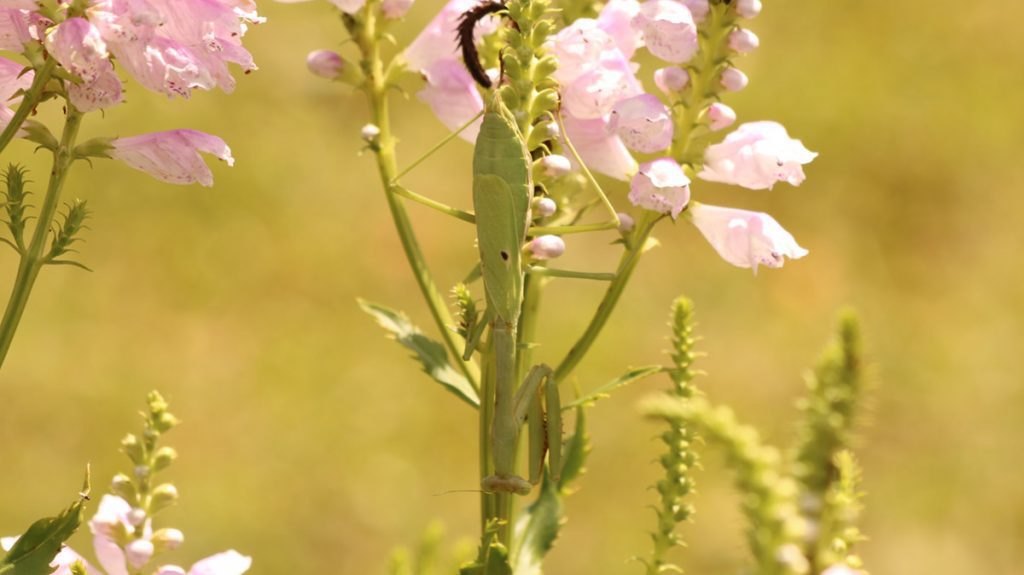
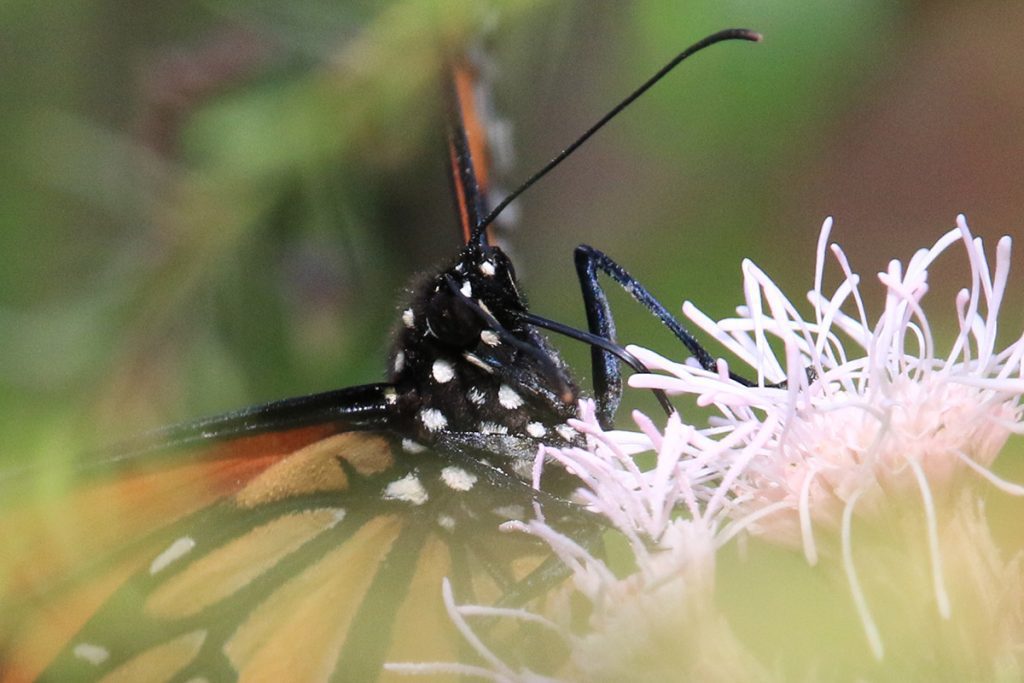
Dig Deeper into Backyard Ecology
What can we do to invite butterflies, birds, and other wildlife into our yards? And what about the flora and fauna that makes its way into our yards; the weeds, insects, and other critters that create the home ecosystem? WFSU Ecology Blog takes a closer look.
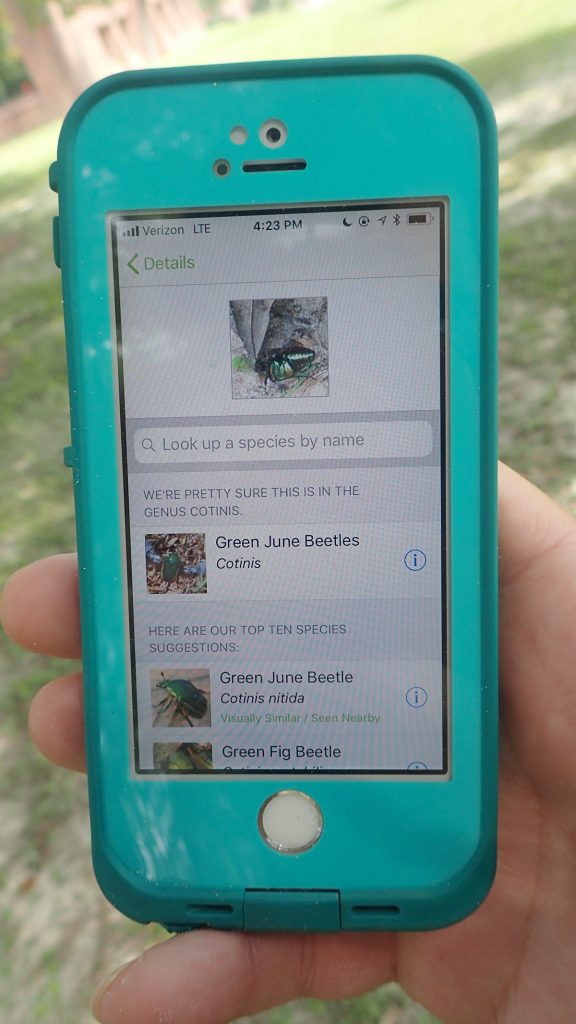
Apps and Citizen Science mentioned in the Backyard Blog
iNaturalist
Identify plants, animals, lichens, and fungi in your yard. Other users correct your identifications if you’re wrong, and even if they don’t, it can be a good springboard to further research.
Seek by iNaturalist
Instant identification, and it doesn’t record your location. This is a good option for kids with phones.
Monarch Larva Monitoring Project
Enter information about monarch caterpillars in your yard, and help researchers get a sense of the health of the monarch population that year, and how and when they’re migrating.
Great Sunflower Project
Record the number of pollinators visiting your flowers, and help researchers map pollinator activity across the country.
